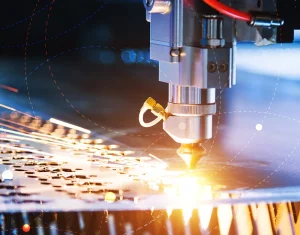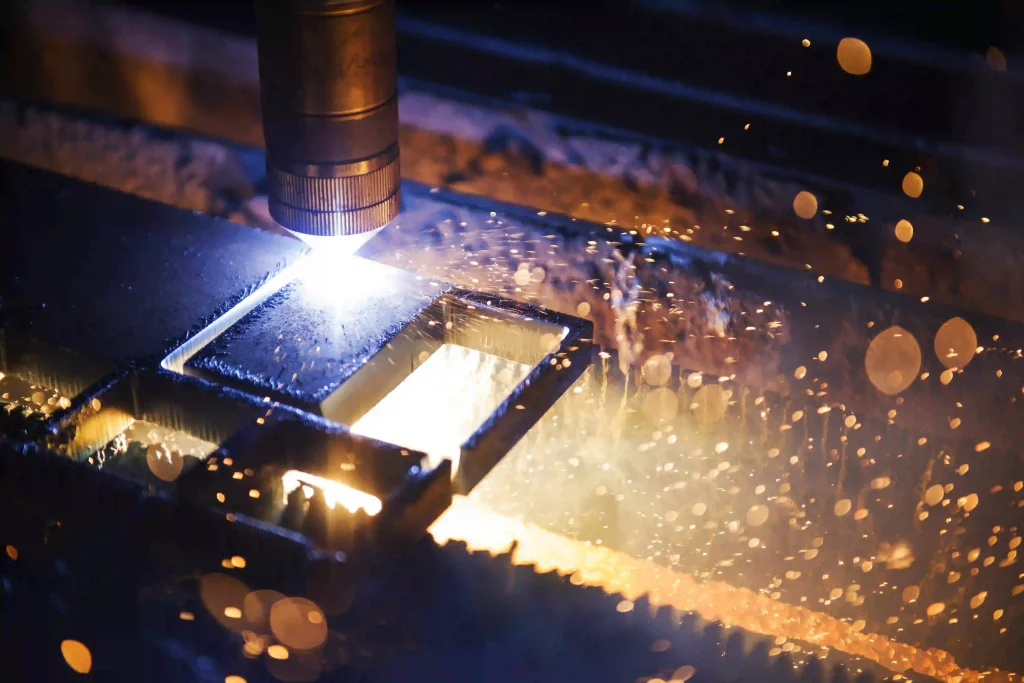The field of welding has been revolutionized by the advent of laser technology, offering unmatched precision and power. In this article, we will explore the various applications of laser technology in welding and delve into the mastery and adventures that can be achieved.
Laser welding has become pervasive across industries such as automotive manufacturing and aerospace engineering, thanks to its exceptional accuracy, efficiency, and versatility. By harnessing the focused energy of lasers, welders can create strong, durable, and high-quality joints with minimal heat input and distortion.
Join us on a transformative journey through the world of laser welding mastery and innovation.
Key Takeaways
- Laser welding offers high precision and control, making it suitable for welding in tight spaces and difficult-to-reach areas.
- Laser welding results in minimal distortion and heat-affected zones, ensuring high-quality welds.
- Laser welding is the preferred choice for industries like automotive, aerospace, and electronics due to its ability to join critical components and meet strict safety standards.
- Cutting-edge laser welding techniques, such as remote laser welding and robotic laser welding, provide improved control over the welding process and increased automation and productivity.
Advantages of Laser Welding
When considering the applications of laser technology in welding, it is essential to acknowledge the numerous advantages that laser welding offers.
Laser welding provides a high level of precision and control, allowing for accurate and intricate welds. The focused beam of the laser enables welding in tight spaces and difficult-to-reach areas, increasing the versatility of the process.
Additionally, laser welding produces minimal distortion and heat-affected zones, reducing the need for further post-welding processes. This results in a faster and more efficient welding process overall.
Moreover, laser welding offers the advantage of non-contact welding, eliminating the risk of contamination and damage to delicate materials.
The freedom of movement and flexibility provided by laser welding make it a preferred choice for various industries, including automotive, aerospace, and electronics.
Key Applications in Various Industries
Laser welding finds extensive applications in various industries, owing to its precise and versatile capabilities. Here are some key applications of laser welding in different sectors:
- Automotive Industry:
Laser welding is widely used in the automotive industry for joining components like body panels, exhaust systems, and fuel tanks. It offers high welding speed, minimal distortion, and excellent weld quality, making it ideal for mass production.
- Aerospace Industry:
Laser welding plays a crucial role in the aerospace industry, where precision and reliability are paramount. It is used for joining critical components like turbine blades, engine components, and fuel system parts. Laser welding ensures strong and durable welds, meeting the strict safety standards in aviation.
- Medical Device Manufacturing:
Laser welding is extensively utilized in the production of medical devices such as implants, surgical instruments, and dental tools. It enables precise and controlled welding of small and delicate parts, ensuring high-quality joins without compromising the integrity and functionality of the devices.
- Electronics Industry:
Laser welding is employed in the electronics industry for joining components on circuit boards, wire bonding, and hermetic sealing of electronic packages. It offers a non-contact and heat-affected zone-free process, ensuring minimal thermal damage to delicate electronic components.
These are just a few examples of how laser welding is revolutionizing various industries, providing efficient and reliable joining solutions for complex applications.

Cutting-Edge Laser Welding Techniques
To further explore the capabilities of laser welding, let’s delve into the realm of cutting-edge techniques that are pushing the boundaries of precision and efficiency in the field. These advanced techniques are revolutionizing the welding industry by offering unmatched levels of accuracy and speed.
One such technique is remote laser welding, which allows for the welding of complex structures without the need for direct physical contact. By utilizing a fiber optic cable, the laser beam can be delivered to the welding point, even in hard-to-reach areas. This technique is particularly beneficial in industries such as automotive and aerospace, where intricate components require precise welding.
Another cutting-edge technique is hybrid laser welding, which combines the advantages of laser welding with traditional welding methods. By integrating a laser beam with another welding process, such as gas tungsten arc welding, hybrid laser welding offers improved control over the welding process and enhanced weld quality.
Furthermore, advancements in robotic laser welding have resulted in increased automation and productivity. Robots equipped with laser welding systems can perform repetitive welding tasks with high precision and speed, reducing the need for manual labor and improving overall efficiency.
Overcoming Common Challenges in Laser Welding
To address the hurdles faced in laser welding, industry experts have developed innovative solutions that enhance the efficiency and reliability of the process. Here are four common challenges in laser welding and the corresponding solutions:
- Heat management: Laser welding generates intense heat, which can lead to distortions and material damage. To overcome this, techniques like pulse shaping and beam oscillation are employed to control the heat input and manage the temperature gradient.
- Joint fit-up: Precise alignment of the workpieces is crucial for successful welding. Advanced vision systems and automated alignment tools are used to ensure accurate joint fit-up, reducing the risk of defects and improving weld quality.
- Material compatibility: Different materials have varying welding characteristics. By optimizing laser parameters such as power, pulse duration, and focal position, it is possible to achieve successful welds even with dissimilar materials.
- Contamination control: Contaminants like oils, oxides, and surface coatings can negatively impact the welding process. Pre-weld cleaning methods such as solvent cleaning, laser ablation, or plasma cleaning are implemented to ensure a clean and contamination-free welding environment.
Future Potential and Innovations in Laser Welding
The potential for future advancements and innovations in laser welding is vast. As technology continues to evolve, so too does the potential for laser welding to become even more efficient and effective.
One area of future potential lies in the development of new laser sources. Current laser welding systems primarily use solid-state lasers, but there is ongoing research into the use of fiber lasers and diode lasers, which offer advantages such as higher beam quality and increased power.
Additionally, advancements in laser control systems and automation technologies will allow for greater precision and control in the welding process. This will result in improved weld quality and reduced defects.
Furthermore, the integration of artificial intelligence and machine learning algorithms into laser welding systems has the potential to optimize process parameters in real-time, leading to increased productivity and efficiency.
Frequently Asked Questions
How Does Laser Welding Compare to Traditional Welding Methods?
Laser welding offers several advantages over traditional welding methods. It provides precise and focused heat, resulting in improved weld quality and reduced distortion. Additionally, laser welding is faster, more efficient, and allows for greater control and automation in the welding process.
What Are Some Specific Industries That Benefit From Laser Welding?
Laser welding has applications in various industries such as automotive, aerospace, electronics, and medical. Its precise and efficient nature makes it ideal for joining materials in these sectors, resulting in stronger and more reliable welds.
Can You Explain Some of the Advanced Techniques Used in Laser Welding?
Some advanced techniques used in laser welding include keyhole welding, twin-spot welding, and remote welding. These techniques allow for precise control of the weld bead, reduced heat input, and increased welding speed.
What Are the Most Common Challenges That Arise in Laser Welding?
The most common challenges in laser welding include heat distortion, porosity, and lack of fusion. These issues can be addressed through proper beam control, laser power optimization, and the use of suitable welding parameters.
What Are Some Potential Future Innovations or Advancements in Laser Welding Technology?
Potential future innovations or advancements in laser welding technology include improvements in laser power and beam quality, development of new welding processes, integration of artificial intelligence for real-time monitoring and control, and advancements in robotic automation for increased efficiency and precision.
Conclusion
In conclusion, the advancements in laser technology have revolutionized the field of welding, offering exceptional accuracy, efficiency, and versatility.
The benefits of laser welding are pervasive across various industries, from automotive manufacturing to aerospace engineering.
By harnessing the focused energy of lasers, welders can create strong, durable, and high-quality joints with minimal heat input and distortion.
Overcoming common challenges in laser welding has paved the way for future innovations and progress in this cutting-edge technology, unlocking its vast potential for further advancements in the realm of welding.
You May Also Like:

